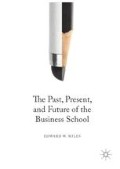Abstract
The nature of prestige-seeking is that it is competitive. A business school must move ahead of competitors if it is to increase its prestige. Therefore, although academics have general disdain for rankings published by BusinessWeek and many others, the needs of prestige-seeking are such a perfect match to competitive rankings that business schools are co-opted into participating in the ratings game.
In addition to program rankings, professors and programs seek prestige within the academy. Unfortunately, business school deans are in a dilemma. They must hire research faculty. However, business schools have multiple stakeholders with multiple expectations. A faculty hired based on the single criterion of research ability is not configured ideally for helping the dean satisfy the full scope of those multiple stakeholders.
Access this chapter
Tax calculation will be finalised at checkout
Purchases are for personal use only
References
Alajoutsijärvi, K., Juusola, K., & Siltaoja, M. (2015). The legitimacy paradox of business schools: Losing by gaining? Academy of Management Learning and Education, 14(2), 277–291.
Bok, D. (1986). Higher learning. Cambridge, MA: Harvard University Press.
Bok, D. (2003). Universities in the marketplace: The commercialization of higher education. Princeton, NJ: Princeton University Press.
Breault, D. A., & Callejo Pérez, D. M. (2012). The red light in the ivory tower: Contexts and implications of entrepreneurial education. New York, NY: Peter Lang.
Brewer, D. J., Gates, S. M., & Goldman, C. A. (2002). In pursuit of prestige: Strategy and competition in U.S. higher education. New Brunswick, NJ: Transaction Books.
Devinney, T., Dowling, G. R., & Perm-Ajchariyawong, N. (2008). The Financial Times business schools ranking: What quality is this signal of quality? European Management Review, 5, 195–208.
Ewing, D. W. (1990). Inside the Harvard Business School. New York, NY: Times Books.
Glick, W. H. (2008). Rain man or pier piper? Moving business schools beyond media rankings with mass customization and stakeholder education. Academy of Management Perspectives, 22(1), 18–23.
Hambrick, D. C. (1994). What if the academy actually mattered? Academy of Management Review, 19(1), 11–16.
Hofstadter, R., & Metzger, W. P. (1955). The development of academic freedom in the United States. New York, NY: Columbia University Press.
Karabell, Z. (1998). What’s college for? The struggle to define American higher education. New York, NY: Basic Books.
Khurana, R., & Spender, J. C. (2012). Herbert A. Simon on what ails business schools: More than ‘A problem in organizational design’. Journal of Management Studies, 49(3), 619–639.
Lucas, C. J. (1994). American higher education: A history. New York, NY: St. Martin’s Press.
Lucas, C. J. (1996). Crisis in the academy: Rethinking higher education in America. New York, NY: St. Martin’s Press.
Seuss, D. (pseudonym for Geisel, T.S.) (1961). The sneetches and other stories. New York, NY: Random House.
Trieschmann, J. S., Dennis, A. R., Northcraft, G. B., & Niemi, A. W. (2000). Serving multiple constituencies in business schools: M.B.A. program versus research performance. Academy of Management Journal, 43(6), 1130–1141.
Veblen, T. (1918). The higher learning in America. New York, NY: Huebsch.
Worrell, D. L. (2009). Assessing business scholarship: The difficulties in moving beyond the rigor-relevance paradigm trap. Academy of Management Learning and Education, 8(1), 127–130.
Zemsky, R. (2008). The rain man cometh—Again. Academy of Management Perspectives, 22(1), 5–14.
Author information
Authors and Affiliations
Rights and permissions
Copyright information
© 2016 The Author(s)
About this chapter
Cite this chapter
Miles, E.W. (2016). Prestige-Seeking by Business Schools. In: The Past, Present, and Future of the Business School. Palgrave Macmillan, Cham. https://doi.org/10.1007/978-3-319-33639-8_9
Download citation
DOI: https://doi.org/10.1007/978-3-319-33639-8_9
Published:
Publisher Name: Palgrave Macmillan, Cham
Print ISBN: 978-3-319-33638-1
Online ISBN: 978-3-319-33639-8
eBook Packages: Business and ManagementBusiness and Management (R0)

